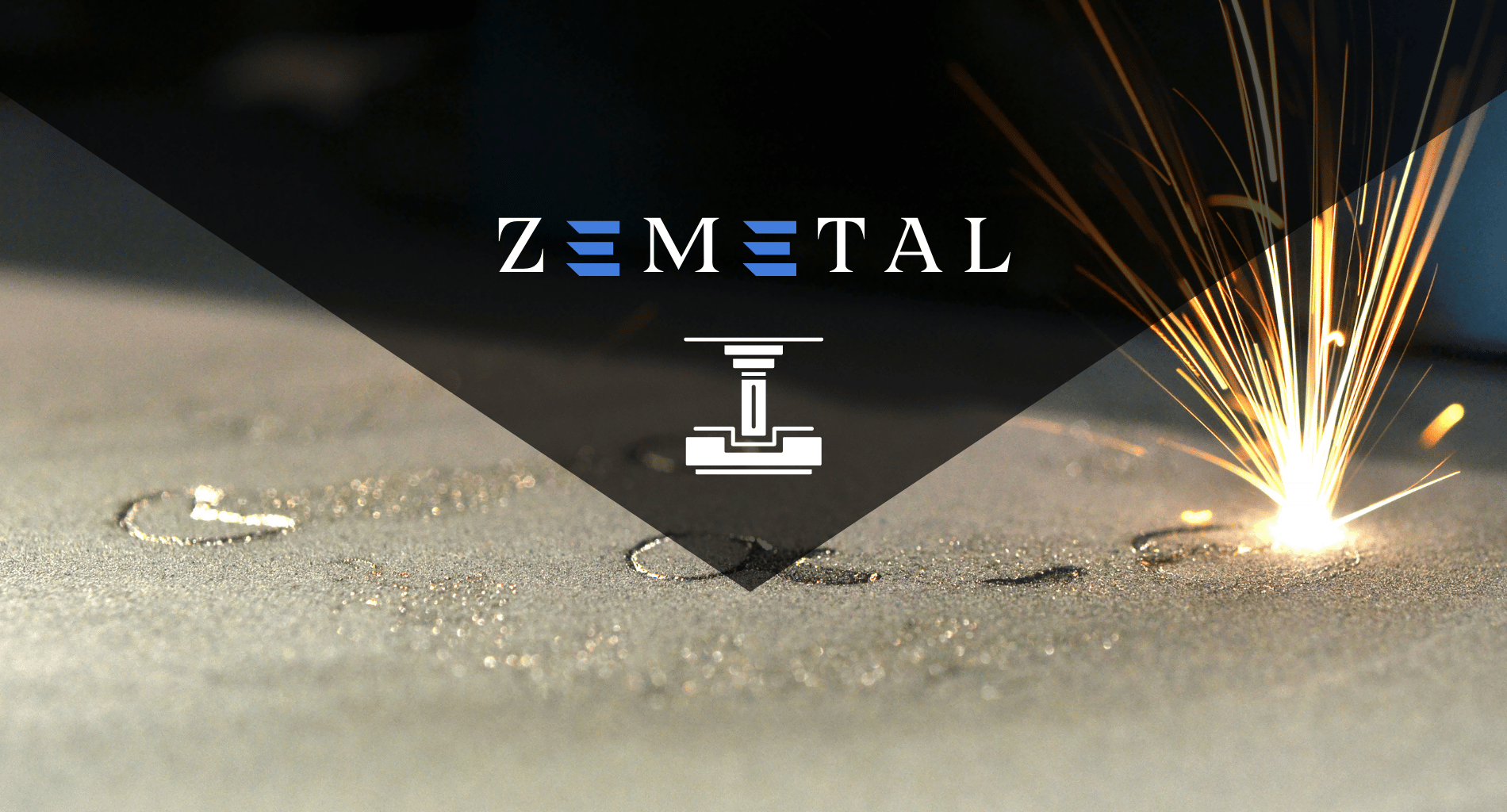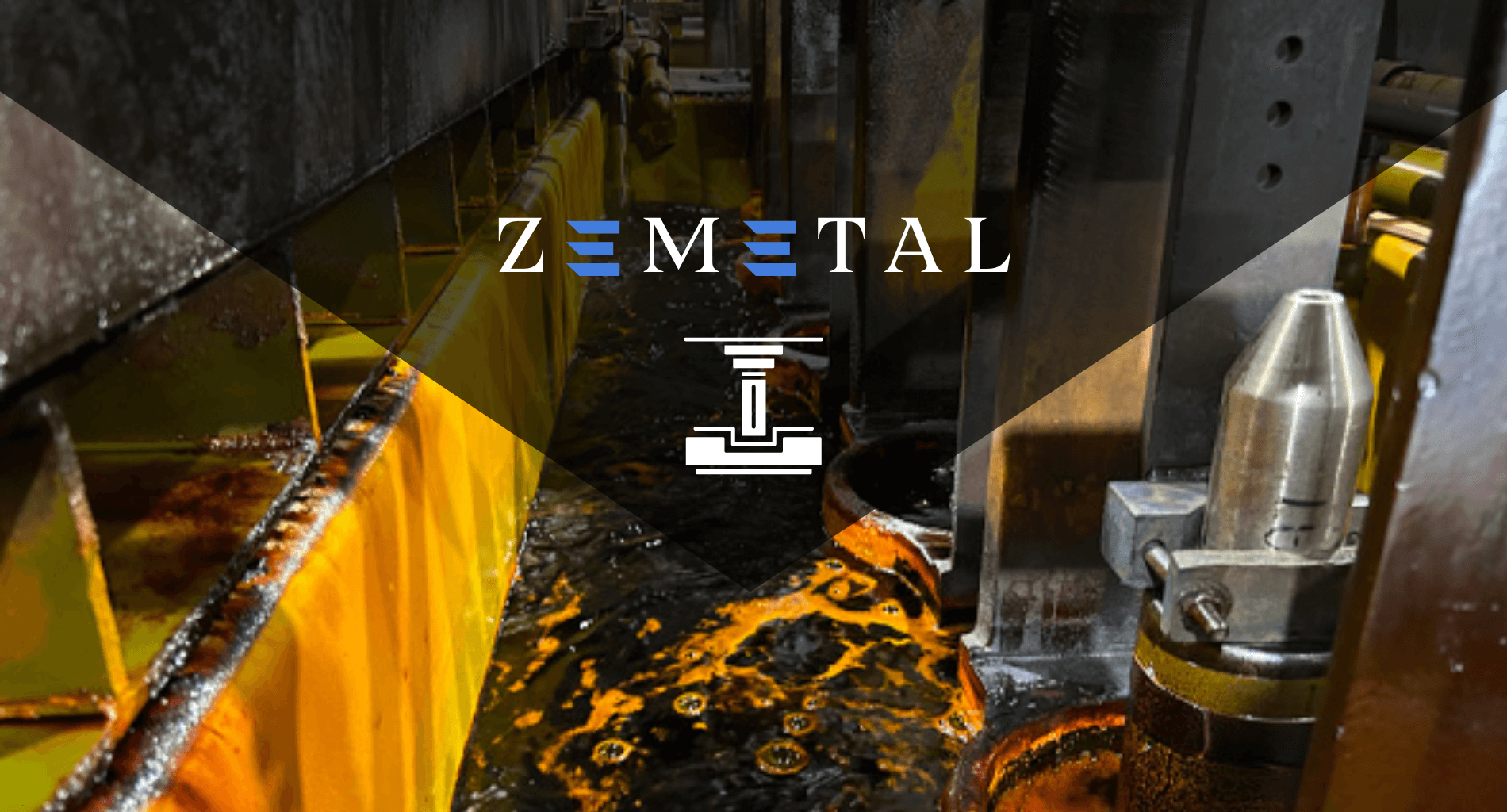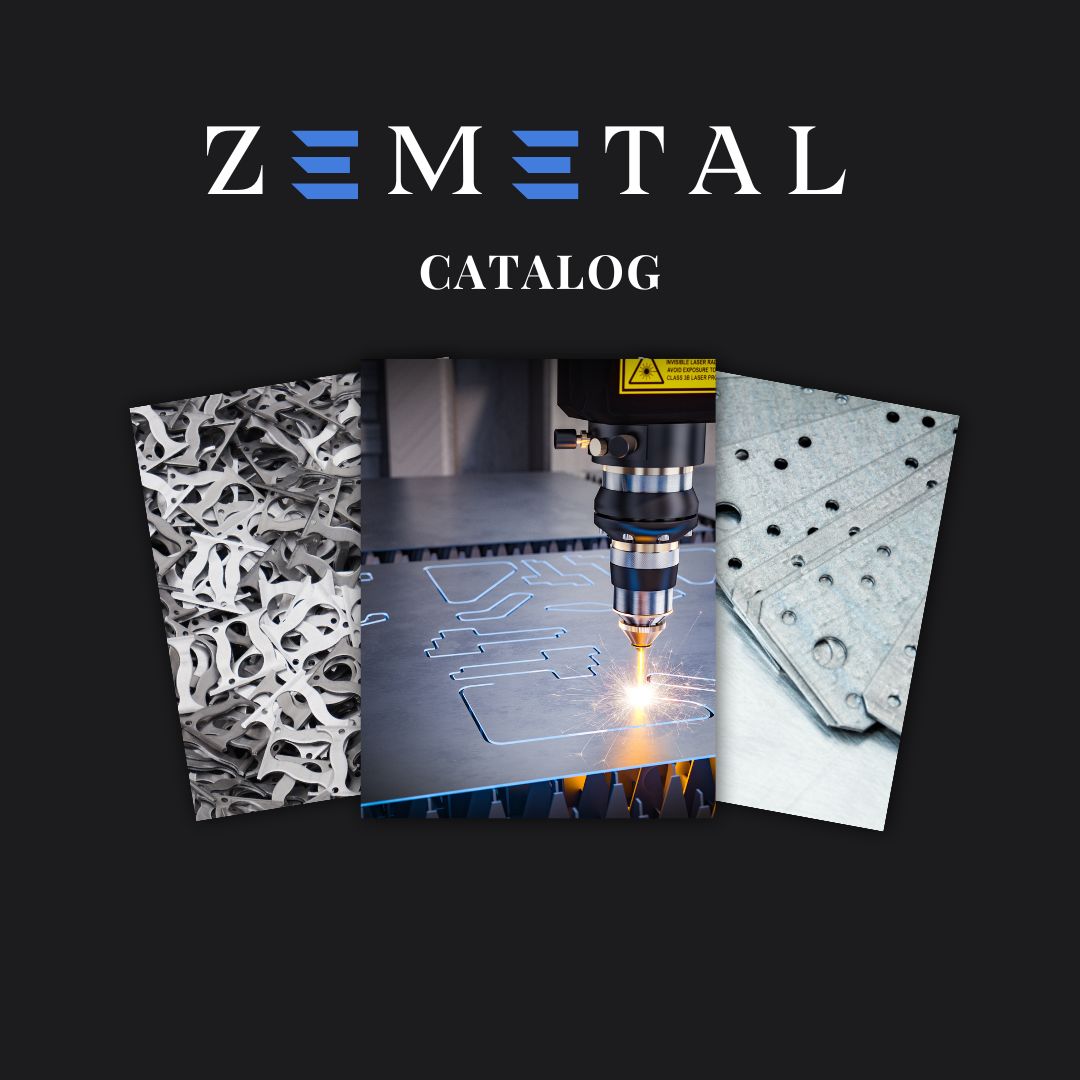Does your metal fabrication services striving to outperform your competition with superior metal finishes? The choice between anodizing and hard anodizing might just be the game-changer your business needs.
With a deep understanding of the metal fabrication industry’s trends, I offer insights that go beyond surface-level knowledge. My expertise is built on a foundation of practical experience and a keen eye for evolving industry standards.
While anodizing provides a decorative, corrosion-resistant finish ideal for architectural components, here’s hard anodizing that delivers a thicker, wear-resistant coating suited for high-wear industrial applications.
In this guide, we’ll delve into the technical aspects, practical applications, and strategic considerations of each process, equipping you with the knowledge to make informed decisions.
Read on to unveil the potential of each technique.
1. Importance of Surface Treatments in Metalworking
Surface treatments in metalworking are a pivotal factor in enhancing the longevity and functionality of metal products. By applying these treatments, businesses can significantly improve corrosion resistance, wear resistance, and surface hardness. This leads to products that not only last longer but also perform better under stress, making surface treatments an essential aspect of quality manufacturing.
Moreover, surface treatments play a crucial role in expanding the application of metals. They allow customization in terms of color and finish, meeting specific design requirements while protecting against environmental factors. This adaptability opens new markets and opportunities for businesses, demonstrating that surface treatments are a vital investment in product development and competitive positioning.
2. Anodizing Explained
Anodizing is an electrochemical process that enhances the natural oxide layer on metals, increasing their durability and corrosion resistance. It allows for a range of color finishes, enhancing the aesthetic appeal of the treated items. This treatment is especially beneficial for improving the performance of metal components.
Features
- Enhanced Durability: Anodizing transforms the metal surface into a durable, corrosion-resistant finish. The process creates a hard, protective layer that reduces wear and tear, ensuring the product withstands harsh conditions and extends its lifespan.
- Electrical Insulation: Anodized coatings are non-conductive, making them ideal for electronic and electrical applications. This feature prevents short circuits and electrical interference, enhancing the safety and reliability of the components.
- Aesthetic Appeal: Anodizing allows for a range of colors and finishes, offering a visually attractive look. This customization enables businesses to cater to specific design preferences and branding requirements, making products more attractive to consumers.
- Improved Adhesion: The anodized layer provides an excellent base for adhesives and paints, improving bonding strength. This is particularly beneficial for applications requiring additional coatings or treatments, ensuring they adhere well and last longer.
Applications
- Aerospace Industry: Anodizing is crucial in the aerospace sector for its ability to create lightweight, strong components resistant to harsh environmental conditions. The process is used for aircraft parts, ensuring they withstand extreme temperatures and pressures while maintaining structural integrity.
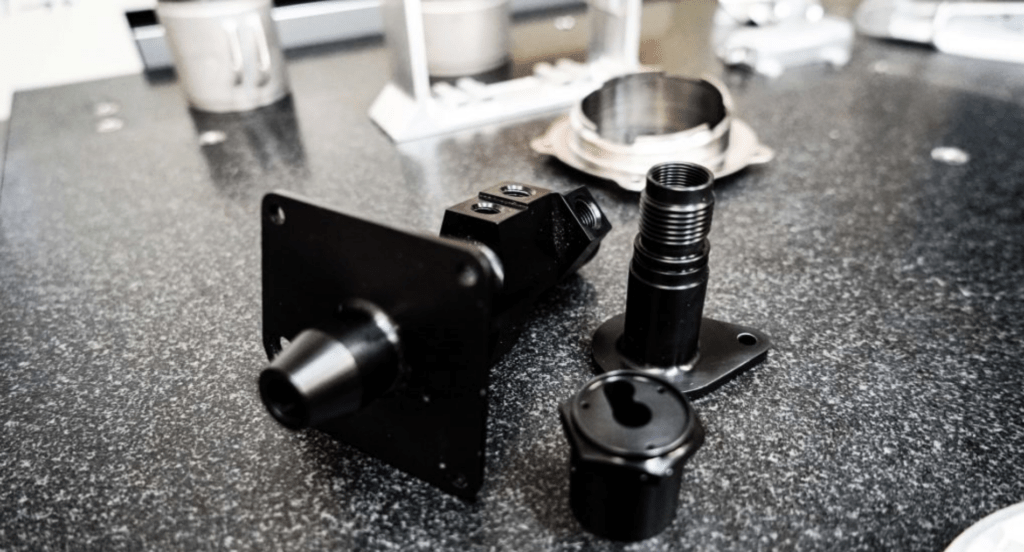
- Architectural Construction: In construction, anodized aluminum is used for building facades, window frames, and doorways due to its corrosion resistance and aesthetic flexibility. It withstands various weather conditions, maintaining its appearance and structural quality over time.
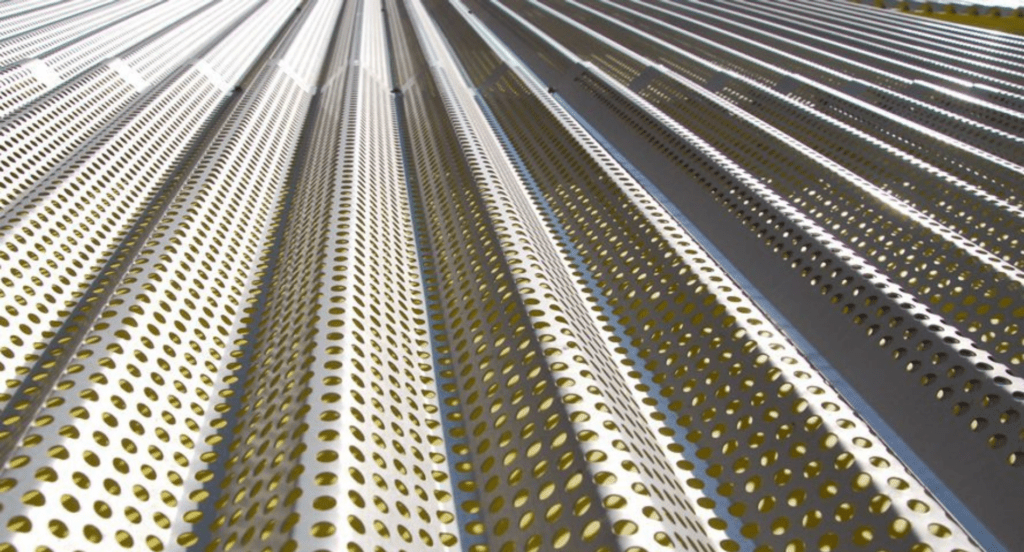
- Consumer Electronics: As per Precedence Research, the consumer electronics market anticipated to reach US$ 1264.52 billion by 2032. This makes anodizing widely used in this sector for its fine finish. From smartphones to laptops, anodizing offers a scratch-resistant protective layer that aligns with the industry’s rapid growth and the demand for high-quality finishes.
- Food and Beverage Equipment: In the food industry, anodized components are valued for their non-toxic, heat-resistant properties. Equipment with anodized parts ensures safety and durability, resisting corrosion from frequent cleaning and contact with acidic substances.
Pros and Cons
Pros:
- Increased Durability: Anodizing effectively enhances the natural oxide layer on metals, significantly increasing their durability. This process makes the surface much harder and more resistant to corrosion and wear, ensuring a longer lifespan for the treated parts.
- Aesthetic Versatility: One of the significant advantages of anodizing is the wide range of colors and finishes it offers. This allows for greater customization, enabling Zemetal to cater to specific aesthetic preferences and branding requirements in anodizing.
- Environmentally Friendly: Anodizing is a safe process that doesn’t produce harmful or toxic substances. The coatings are chemically stable, do not decompose, and are non-toxic, making anodized products safe for both the environment and human health.
Cons:
- Initial Cost: While cost-effective in the long run due to the durability it provides, the initial setup and process of anodizing can be more expensive than some other surface treatments. This might be a consideration for smaller businesses or those with tight budget constraints.
- Limited to Certain Metals: Anodizing is primarily effective on aluminum and a few other metals. This limitation means that not all metal products can benefit from this treatment, potentially restricting its application in some industries.
- Color Fading Over Time: Although anodized finishes are generally stable and long-lasting, prolonged exposure to UV light can cause the colors to fade over time. This might be a concern for products that are consistently exposed to direct sunlight or harsh outdoor environments.
3. Delving into Hard Anodizing
Hard anodizing creates a significantly thicker and harder oxide layer on metals, offering superior wear resistance. This process is ideal for components that require enhanced performance in harsh environments. Additionally, hard anodizing extends the lifespan and maintains the quality of high-use industrial parts.
Features
- Increased Surface Hardness: Hard anodizing creates a thicker oxide layer, significantly increasing the surface hardness of the treated metal. This makes it comparable to hardened steel, offering superior resistance to scratches and wear, and extending the component’s operational life.
- Enhanced Corrosion Resistance: The denser oxide layer produced by hard anodizing provides even greater protection against corrosion. This is particularly beneficial in environments where the metal is exposed to hazardous chemicals or extreme weather conditions, ensuring long-term integrity and performance.
- Improved Thermal Insulation: Hard anodized coatings can improve thermal insulation properties, reducing heat transfer and making the surface safer to handle in high-temperature applications. This feature is crucial for components that operate under significant thermal stress, helping to maintain structural stability.
- Electrical Insulation: Like standard anodizing, hard anodizing also offers excellent electrical insulation properties. The thicker oxide layer enhances this effect, providing a more robust barrier against electrical conductivity and making it suitable for high-voltage applications.
Applications
- Automotive Industry: In the automotive sector, hard anodizing is used for components like pistons, cylinders, and gears. The process provides the necessary durability and heat resistance for these parts to withstand the rigors of high-performance operation and frequent use.
- Aerospace Applications: Aerospace components require materials that can endure extreme conditions. In Zemetal’s services, hard anodizing is employed to treat parts exposed to high speeds, temperatures, and pressures, ensuring safety and reliability in critical aerospace applications.
- Military and Defense: Military equipment demands materials that can survive in the toughest environments. Hard anodized parts are used in various military applications due to their enhanced durability, corrosion resistance, and ability to withstand abrasive conditions.
- Industrial Machinery: In heavy machinery and industrial equipment, hard anodizing is crucial for reducing wear and tear on moving parts. It ensures that components can last longer and perform better, even under continuous or heavy load, reducing downtime and maintenance needs.
Pros and Cons
Pros:
- Superior Durability: Hard anodizing creates a harder surface layer compared to standard anodizing, significantly increasing resistance to wear and tear. This makes it ideal for heavy-duty applications where components need to maintain their integrity over a long period.
- Excellent Corrosion Resistance: The dense oxide layer produced through hard anodizing offers outstanding protection against corrosion. This is especially beneficial in industries where metal parts are exposed to corrosive substances, helping to extend the lifespan of the components.
- Enhanced Performance in Extreme Conditions: Hard anodized coatings can withstand extreme temperatures and provide excellent electrical insulation. This makes them suitable for a wide range of industrial applications, including those that involve high thermal stress or require electrical safety.
Cons:
- Higher Costs: The hard anodizing process is more complex and consumes more energy than standard anodizing, leading to higher operational costs. This might not be cost-effective for all businesses, especially small-scale operations or those requiring only a basic level of surface treatment.
- Thickness Limitations: While the thicker oxide layer provides numerous benefits, it can also limit the dimensional tolerance of the treated parts. This might require additional machining or adjustments, especially for components with very tight specifications.
- Color Variability: Hard anodizing typically results in darker and more limited color options compared to standard anodizing. This can be a drawback for projects where aesthetic appearance and specific color matching are crucial.
4. Key Differences Between Anodizing and Hard Anodizing
Having explored the depths of anodizing and hard anodizing, it’s crucial to pinpoint the distinctions between this process and standard anodizing. Let’s explore below the highlighted differences of each method:
Process and Thickness
- Anodizing: The standard anodizing process involves converting the metal surface into a durable, corrosion-resistant anodic oxide finish. This layer is typically thin, about 0.5 to 25 micrometers, and is sufficient for many general applications where a balance of durability and cost-effectiveness is desired.
- Hard Anodizing: Hard anodizing, on the other hand, produces a significantly thicker oxide layer, usually 25 to 150 micrometers. This process involves more intense conditions, such as lower temperatures and higher voltage, resulting in a denser and much harder surface. The increased thickness makes it ideal for high-wear applications.
Durability and Wear Resistance
- Anodizing: While standard anodizing improves the durability and corrosion resistance of metals, it’s generally considered suitable for moderate-use applications. It provides a good level of protection against daily wear and tear, minor impacts, and exposure to less aggressive environments.
- Hard Anodizing: Hard anodizing dramatically increases the wear resistance and longevity of the treated parts. The thicker oxide layer is much harder, comparable to that of hardened steel, and is designed to withstand severe conditions, including abrasive environments and heavy mechanical stress.
Electrical and Thermal Insulation
- Anodizing: Standard anodizing provides good electrical insulation due to the non-conductive nature of the oxide layer. This feature is beneficial in preventing electrical interference in various electronic components. However, the thinner layer means its insulation capabilities are limited to less demanding applications.
- Hard Anodizing: Hard anodizing offers superior electrical insulation because of its thicker oxide layer. This makes it highly suitable for high-voltage applications where strong electrical insulation is crucial. The increased thickness also provides better thermal insulation, protecting components from rapid temperature changes.
5. 4 Tips for Selecting the Right Process for Your Needs
Understanding the key differences between anodizing and hard anodizing is the first step. Now, let’s focus on how to select the appropriate process for your specific metal fabrication needs. Here are the tips that you think of:
#1 Assessing the Operating Environment
Consider the environment in which the finished product will operate. For example, for items exposed to harsh conditions, frequent abrasion, or extreme temperatures, hard anodizing might be the more suitable option due to its enhanced durability and resistance. On the other hand, standard anodizing could suffice for less demanding conditions where aesthetic diversity and cost-effectiveness are more critical.
#2 Determining Aesthetic Requirements
Reflect on the aesthetic expectations for your product. For instance, if color and appearance are vital for branding or the product’s end use, standard anodizing offers a wider range of colors and a glossier finish. However, if the product requires a more subdued look or will be used in conditions where color integrity might degrade over time, hard anodizing’s limited but stable color options might be preferable.
#3 Evaluating Component Specifications
Analyze the specifications and tolerances of the components you’re working with. Hard anodizing increases the thickness and changes the dimensions of the treated part, which might not be suitable for components with tight tolerances. Standard anodizing adds less material to the surface, making it a better choice for intricate designs or when exact dimensions must be maintained.
This table provides insights into evaluating component specifications for anodizing processes, focusing on the implications of hard and standard anodizing on component dimensions and tolerances.
| Specification Aspect | Consideration in Anodizing Process | Impact on Component Usage |
| Thickness Increase (Hard Anodizing) | Adds significant material to the surface | May affect components with tight tolerances |
| Dimensional Changes | Altered by the anodizing layer thickness | Critical for precision-fitted parts |
| Tolerance Suitability | Varies based on anodizing type | Essential for functional compatibility |
| Suitability for Intricate Designs | Standard anodizing preferable for complex patterns | Maintains design integrity and dimensions |
| Material Selection | Compatibility with anodizing process | Influences final quality and durability |
#4 Considering Long-Term Costs and Benefits
Think long-term about the costs versus the benefits. While hard anodizing is more expensive upfront, it might offer savings down the line due to less maintenance. Standard anodizing might be more cost-effective initially, but consider whether the potentially increased maintenance or shorter lifespan might lead to higher costs over time. Select the process that aligns with your long-term financial planning and product lifecycle expectations.
Conclusion
In exploring the contrasts between anodizing and hard anodizing, this guide aims to empower you with the knowledge to make informed decisions tailored to your unique metal fabrication needs. The right choice can significantly impact the performance, aesthetics, and longevity of your products.
If you’re seeking expert guidance in selecting and applying anodizing or hard anodizing processes, Zemetal is here to assist. For a personalized solutions that will elevate your metal fabrication projects, contact us today.
Dive Deeper Into Our Resources
Looking for more diverse service options? Browse through our handpicked selections:
For some insightful reads, we’ve curated a list of recommended articles just for you:
Still haven’t found what you’re looking for? Don’t hesitate to contact us. We’re available around the clock to assist you.


